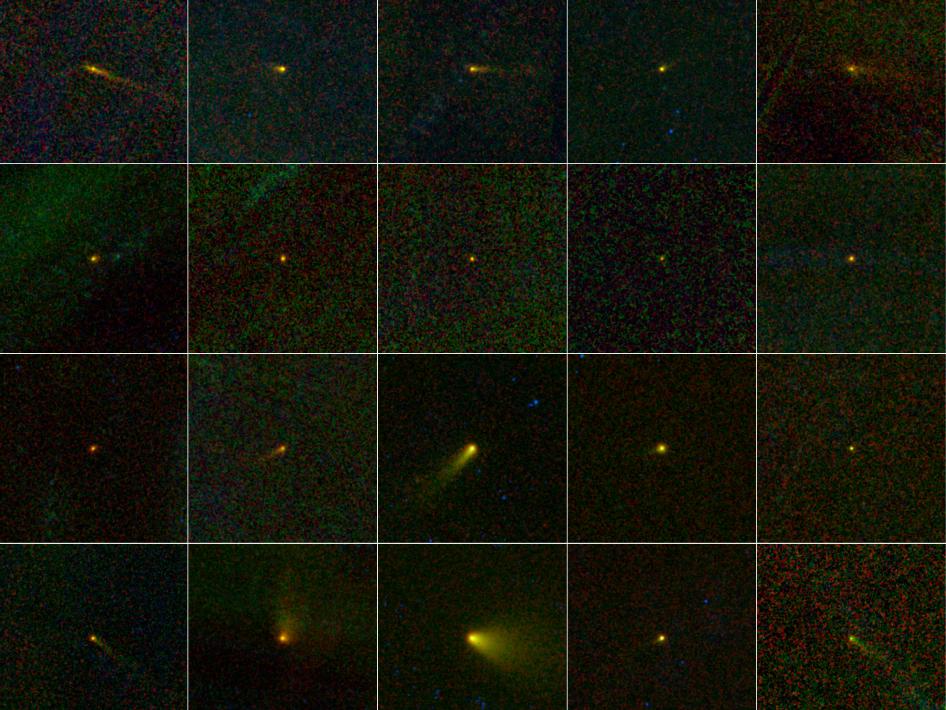Asteroid Survey Finds Over 33,000 Space Rocks

Our solar system just got more crowded. A newly completed NASA survey of space rocks in our solar system revealed 20 new comets, more than 33,000 asteroids, and 134 other near-Earth objects.
NASA's NEOWISE mission recently finished the survey, which was a secondary job for the agency's Wide-field Infrared Survey Explorer, or WISE, space telescope. WISE fulfilled its primary goal of photographing the entire sky 1 1/2 times in infrared light last year.
The telescope ran out of coolant to keep its electronics chilled in October 2010, but the NEOWISE mission was able to move forward using the two of its four detectors not affected by warmer temperatures.
The new catalog of space rocks helps fill in our limited knowledge of the contents of the solar system, researchers say.
Scientists say it's especially important to learn more about near-Earth objects (NEOs), which are asteroids and comets with orbits that come within 28 million miles (45 million kilometers) of Earth's path around the sun, since some of them could potentially pose a collision hazard with our planet.
"Even just one year of observations from the NEOWISE project has significantly increased our catalog of data on NEOs and the other small bodies of the solar systems," Lindley Johnson, NASA's program executive for the NEO Observation Program, said in a statement.
Now that NEOWISE has successfully completed its catalog, the WISE spacecraft will go into hibernation mode and remain in polar orbit around Earth, where it could be called back into service in the future.
Get the Space.com Newsletter
Breaking space news, the latest updates on rocket launches, skywatching events and more!
The $320 million WISE telescope launched December 2009, and has captured more than 2.7 million images of objects in space, ranging from faraway galaxies to asteroids and comets close to Earth.
The NEOWISE observations should help scientists determine the newfound space rocks' sizes and compositions.
Whereas visible-light data reveal how much sunlight reflects off an asteroid, infrared data is much more directly related to the object's size. By combining visible and infrared measurements, astronomers can learn about the compositions of the rocky bodies — for example, whether they are solid or crumbly. The findings will lead to a much-improved picture of the various asteroid populations, researchers say.
"WISE has unearthed a mother lode of amazing sources, and we're having a great time figuring out their nature," said Edward (Ned) Wright, the principal investigator of WISE at UCLA.
Join our Space Forums to keep talking space on the latest missions, night sky and more! And if you have a news tip, correction or comment, let us know at: community@space.com.

Space.com is the premier source of space exploration, innovation and astronomy news, chronicling (and celebrating) humanity's ongoing expansion across the final frontier. Originally founded in 1999, Space.com is, and always has been, the passion of writers and editors who are space fans and also trained journalists. Our current news team consists of Editor-in-Chief Tariq Malik; Editor Hanneke Weitering, Senior Space Writer Mike Wall; Senior Writer Meghan Bartels; Senior Writer Chelsea Gohd, Senior Writer Tereza Pultarova and Staff Writer Alexander Cox, focusing on e-commerce. Senior Producer Steve Spaleta oversees our space videos, with Diana Whitcroft as our Social Media Editor.










